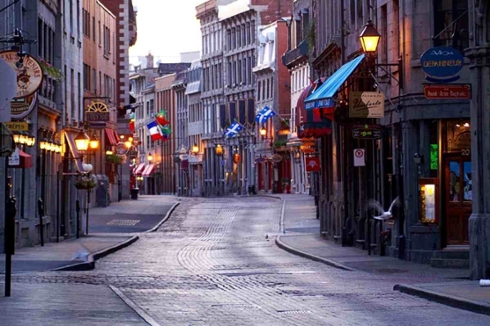Presidents Summer Fellowship, Nanofluids and Gene Mapping Part 2, Abrar Abidi

For his President's Summer Fellowship, Abrar Abidi ’16, physics major is working in a lab at McGill University in Canada, helping to develop new nanofluid technology to improve DNA mapping methods. Read on for his second blog installment:
On so many warm summer evenings here, red and white flares shoot up on the horizon, hissing as they go, before exploding with a deafening pop, forming a lavish spectacle in the Montreal sky. Often as I sit in my little Victorian-era apartment, sudden bangs and crackles send me rushing out to the roof of my building, so I can look toward the harbor, where on an otherwise forlorn stretch of land, six thousand rockets now fire heavenward in a single night. Yearly, the largest firework festival in the world—a kind of pyrotechnic Olympics—takes place in Montreal throughout the month of July. Groups from countries across the world, with their eyes set on prestigious awards, collect in this city to show off their talents in front of three million people. This year, England won the gold medal, while France took home silver and China, bronze. All this amid a procession of other festivities celebrating jazz and African cultures and circus arts and film and comedy. On the few nights not occupied by these events (and we’re still talking only of July), there are huge live music shows, free to the public, many taking place a two-minute walk from my front door.
The lab is a far quieter and colder place. With vents constantly blowing dry, chilly air on every floor of the building, I’ve taken to swaddling myself in at least three layers. Fortunately, the work I do expunges all my guilt for staying indoors. The opportunity to participate in this lab’s experimental efforts is what lured me to McGill in the first place, and in the previous month, my project has taken on a more experimental flavor. Sara, a good friend and researcher with whom I’ve been working closely since June, gave me the task of analyzing thousands of fluorescence microscopy images, zoomed in so close that a fraction of the width of a single human hair could easily eclipse the viewfinder. Fluorescence microscopy is a remarkable technique, where special dyes are used to stain the object of interest, causing it, when illuminated by a powerful lamp, to cast a vivid, luminous glow, no less dazzling to the eyes than the firework displays I can sometimes see from the lab window. Our microscopes are trained on minuscule nano-devices that Sara very cleverly designed and fabricated. Below the glass cover slip, and within these tiny devices, anywhere from a few dozen to several hundred strands of DNA can be seen drifting here and there, tossed about by Brownian motion, flashing like fireflies in the night. Then, with the flip of a switch, the strands rush toward the centers of a series of equidistant spaces, where they accumulate and extend, resembling a phalanx poised for battle. A dial that controls the frequency of a current sent through the device can manipulate their movement, alternately dispersing and concentrating the DNA. The potential applications for this invention are dizzyingly exciting: nothing less than the technology future generations might use to map entire genomes, at speeds and with accuracies far beyond anything currently possible.

“All this is a dream,” wrote Michael Faraday in one of his laboratory notebooks. “Still examine it by a few experiments. Nothing is too wonderful to be true, if it be consistent with the laws of nature; and in such things as these experiment is the best test of such consistency.” During my first month at McGill, I grew to feel out of touch with the real physical world. Through the sheer computational power of today’s computers, physicists and engineers have a way to buttress and expand their imaginations. With proper training, they can draw up a system or device on software and choose which laws of physics they want present in the simulation. Then, with a single keystroke, they begin computing, and behold! Viscous fluids flow, electric currents run, little test particles dart to and fro tracing out impressive arcs—what was once a mathematical abstraction animates itself and unfolds like some scientific drama. Playing God in this way, as I so often did that month, left me yearning to return to firmer ground, to the reality that existed outside of a computer and that confirmed the theories and simulations I had worked to understand and create. That is why my wonderful second month in Montreal, in which I examined, compared, and interpreted our experimental data—with a good deal more success than I had anticipated—was all that I hoped for and more.
Tags: psf, summer, presidents summer fellowship, genetics, biology, research, laboratory, gene mapping, science
